From Farm To Frontline: The Remarkable Journey Of Albert Marr And Jackie The Baboon
In military history, many extraordinary stories show soldiers overcoming hardships together. Yet, during World War I, one story stands out for its exceptional bond between man and animal: that of Albert Marr and his baboon companion, Jackie.
Albert Marr’s story goes beyond conventional narratives of wartime animals. It originates not on the battlefield but on a serene farm near Pretoria, South Africa, where fate intertwined the lives of two unlikely companions.
Keep scrolling down to explore the extraordinary journey of this unique duo from the tranquil farmstead to the frontline of wartime challenges.
Albert Marr and Jackie formed a deep bond on a farm
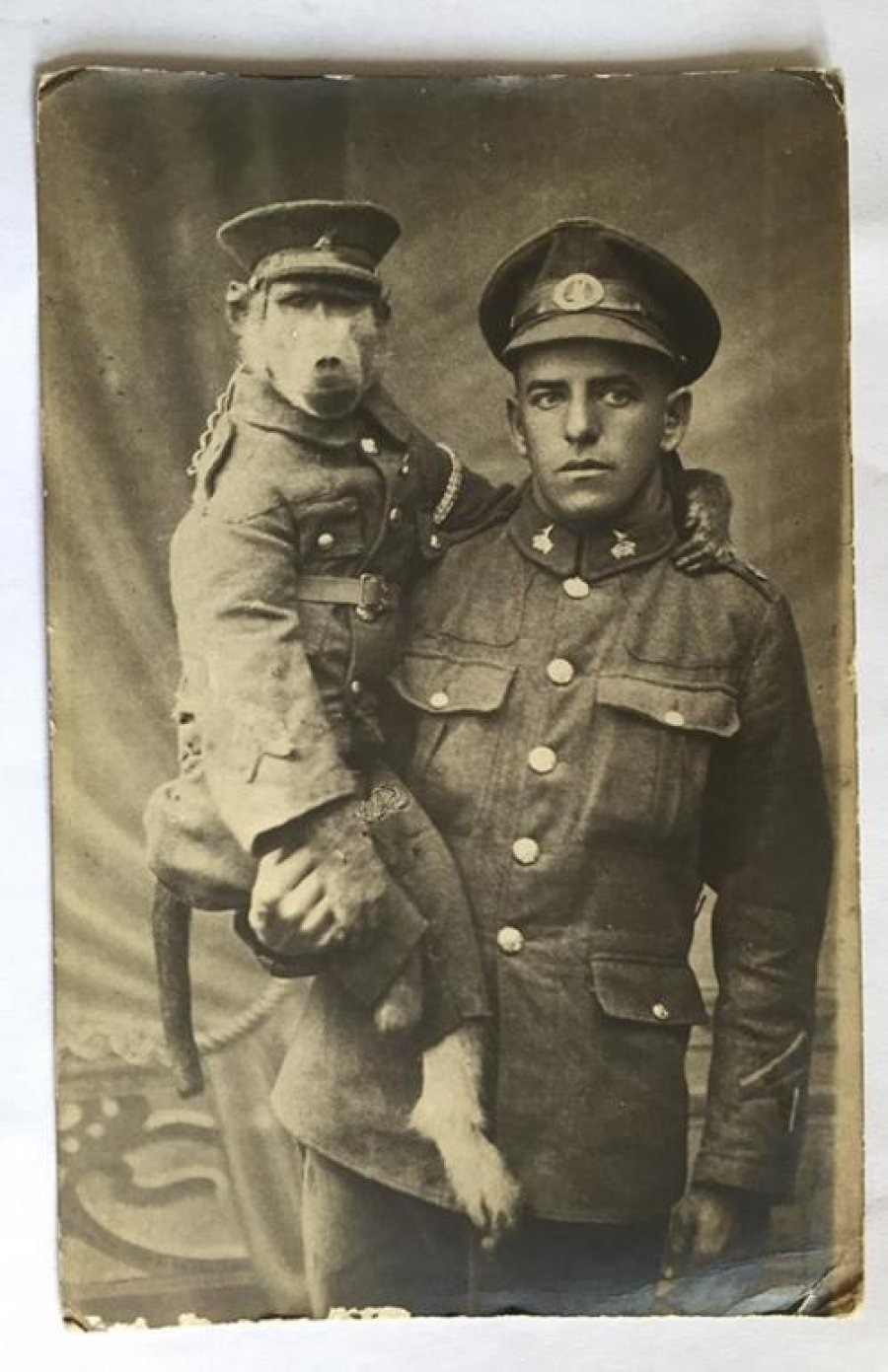
Jackie, a baby baboon, was discovered by Albert Marr (sometimes known as Andrew) on their family farm in Villieria, now part of Pretoria’s southern outskirts near the Magaliesberg.
It’s likely Jackie had been orphaned by bounty hunters hired by the Transvaal government to control baboons raiding crops in the Moot Valley.
Albert brought the young baboon home and treated him as part of the family, almost like a human child. Over time, Jackie and Albert formed a strong bond, becoming inseparable companions.
When World War I began, Albert Marr, like many other young South African men, volunteered for military service.
On August 25, 1915, he was called up at Potchefstroom, given the rank of Private (Pte), and assigned service number 4927 in the 3rd (Transvaal) Regiment of the 1st South African Infantry Brigade, destined to fight in France.
Deeply saddened at the thought of leaving Jackie behind, Pte. Marr proposed the idea of bringing his pet baboon along with him. Surprisingly, his superiors allowed Jackie to accompany him to war.
The couple journeyed through numerous battles during WWI

Once enlisted, Jackie was given the rank of ‘Private’ and outfitted with a uniform adorned with buttons, a cap, and regimental badges. Like any soldier, he received a paybook and his own rations.
Jackie was often seen lighting cigarettes for his comrades and saluting passing officers smartly. He used a knife and fork correctly and sipped from a teacup like a seasoned soldier.
Jackie drilled and marched with his company, lifting spirits with his antics—a crucial morale boost during the monotony of trench warfare in France with the 1st South African Infantry Brigade.
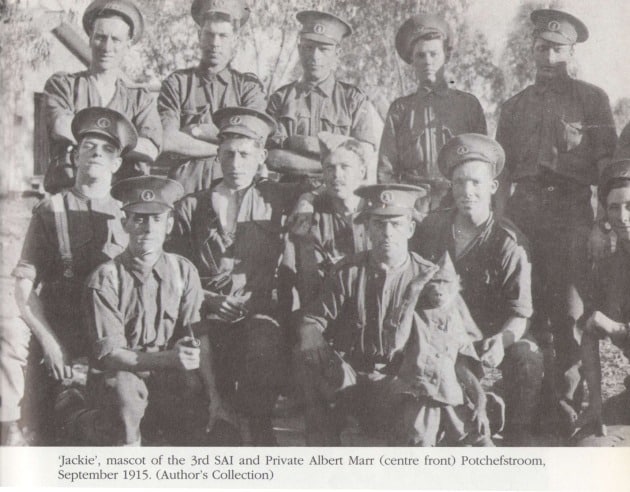
His dedication earned him the esteemed role of the 3rd Transvaal Regiment’s official mascot. He accompanied soldiers everywhere and even sustained wounds from enemy fire.
Albert Marr and Jackie fought together during the Senussi Campaign. The Senussi, aligned with the Ottoman and German Empires, sparked conflict in Egypt. This prompted the dispatch of the 1st South African Infantry Brigade to quell the uprising.
During the Battle of Agagia on February 26, 1916, where they fought the Senussi, Pte. Albert Marr was wounded. Jackie, distraught, comforted him by licking his wounds—a gesture that elevated him from mascot to esteemed comrade among the regiment.
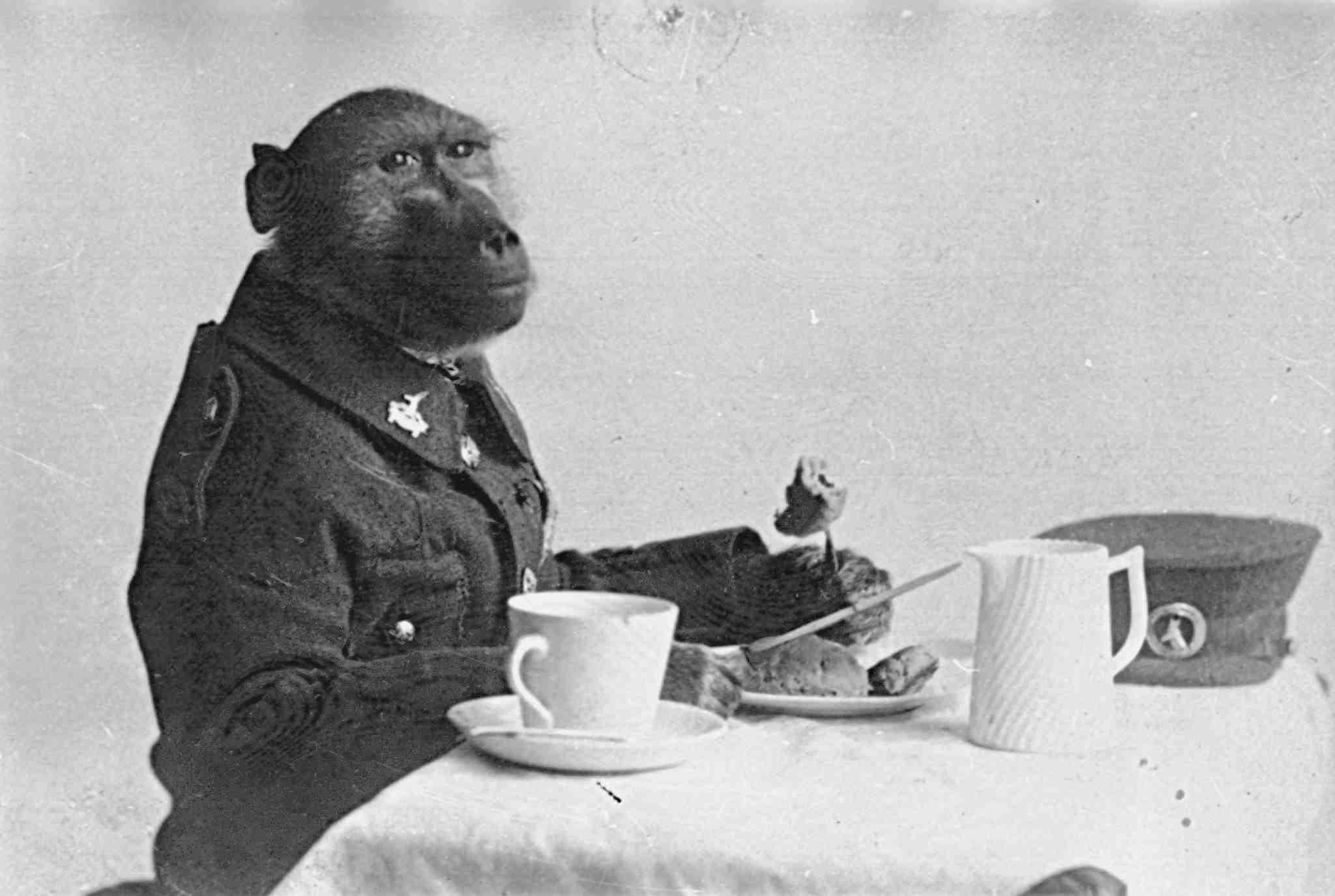
After recovering, Albert and Jackie spent three intense years on the Western Front in Europe, navigating the mud and blood of trench warfare in France and Flanders.
With his keen senses, Jackie became invaluable during night guard duty, alerting Pte. Marr to impending dangers with timely barks and tugs.
Jackie miraculously survived after a bad wound in action
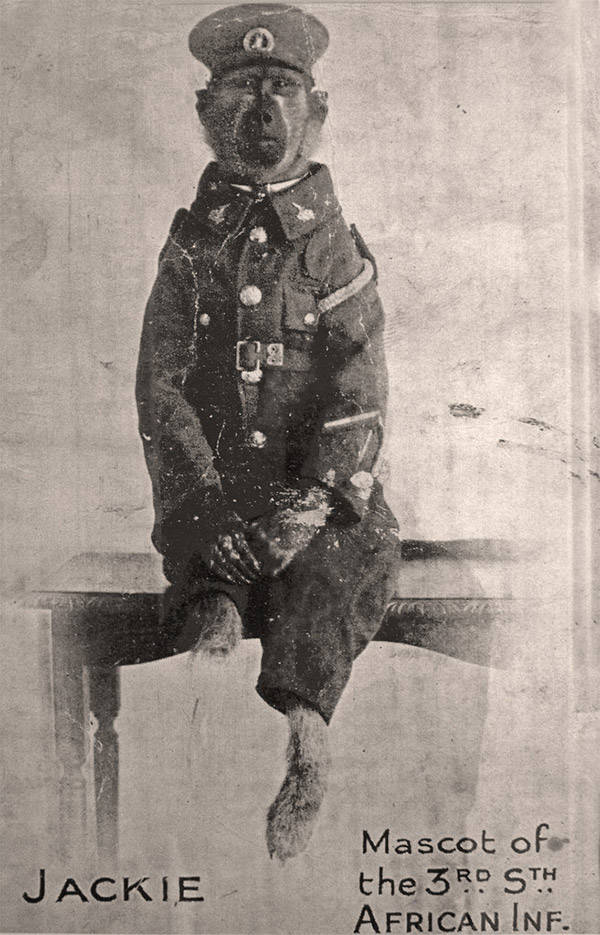
During the Battle of Passchendaele in April 1918, Albert Marr and his loyal companion Jackie faced a harrowing ordeal. As heavy shelling pounded the area near Reningelst, Jackie hastily built a stone barrier to shield himself.
Sadly, shrapnel struck him, severely injuring his front paw and nearly severing his hind leg. Albert also suffered minor injuries in the chaos.
When Jackie was brought to the field hospital, doctors faced a daunting task with no prior experience in animal surgery.
Lieutenant Colonel R.N. Woodsend of the Royal Medical Corps vividly recounted the grim scene in his memoirs:
“It was a terrible sight. The animal the size of a little boy, which his master had brought in his arms, groaned in pain. And the soldier shouted in our faces: ‘Do something for him! He saved my life in Egypt. He comforted me when I was sick with dysentery!'”
After much deliberation, they made the tough decision to anesthetize Jackie with chloroform and amputate his mangled hind leg.
Soon after, to the astonishment of all, Jackie began to recover swiftly. Witnessing Jackie salute their commander from his hospital bed, Albert and the regiment were deeply moved by the baboon’s unwavering courage and loyalty.
Post-war, they rose to widespread fame and recognition
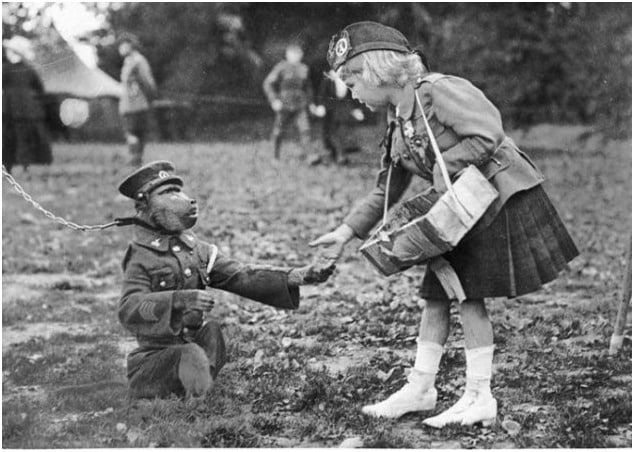
Privates Albert Marr and Jackie ended their wartime duties on November 11, 1918. Upon their arrival in England, Jackie quickly became a sensation, capturing the attention of London’s newspapers and participating in the prestigious Lord Mayor’s Day parade.
From November 1918 to February 1919, Jackie and Marr worked tirelessly with the War Department and the South African government. They joined Red Cross charity events to raise substantial funds for wounded soldiers.
People lined up to shake Jackie’s hand for half a crown or kiss him for five shillings, reflecting his celebrity status and the public’s admiration.
In April 1919, Jackie returned to South Africa, was promoted to Corporal, received a formal discharge, and was granted a military pension. His uniform featured a gold stripe and three blue chevrons, representing his frontline service.
Upon their return to Pretoria in May 1919, Jackie and Albert were welcomed home as heroes.
The pinnacle of Jackie’s recognition came on July 31, 1920, during the Peace Parade at Pretoria Church Square, where he was awarded the prestigious Pretoria Citizen’s Service Medal for his extraordinary contributions during and after the war.
Jackie and Albert’s lives ended in stark contrast
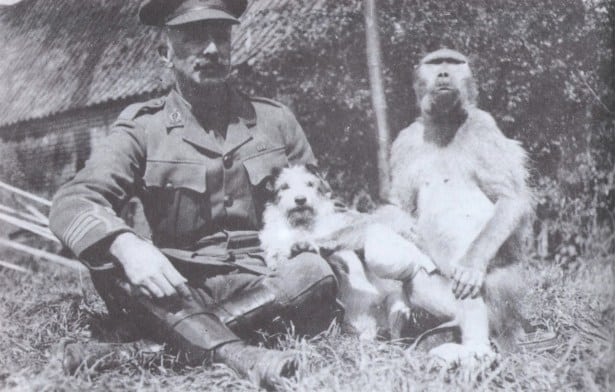
Tragically, the tranquility of their family farm could not shield Jackie from the echoes of war. During a fierce thunderstorm on May 22, 1921, the baboon, haunted by the booming thunder reminiscent of wartime explosions, succumbed to the stress, and Jackie passed away.
It marked a heartbreaking end to the extraordinary life of one of South Africa’s most remarkable soldiers. In contrast, Albert Marr continued to live a long life, passing away at the age of 84 in August 1973.
To this day, Jackie remains unique in military history as the only baboon to hold the rank of Private in the South African Infantry and the sole baboon known to have fought in World War I.

